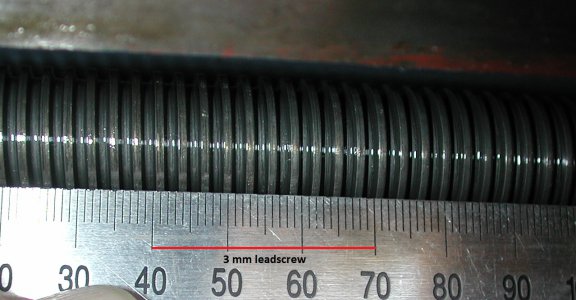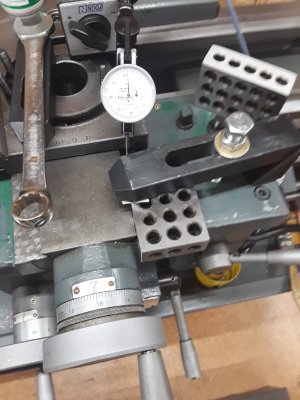- Joined
- Jun 12, 2014
- Messages
- 4,814
On newish lathes and mills you can use the dials to see if there is cumulative error and how well they track. I have checked a number of DRO scales against 123 and 246 blocks as well as use them to check the electronic calibration of electronic edge finders, I have yet to find one that wasn't in spec. These type of measurements if one stacks a series of blocks may lead to more error than inherent in the scales, but in some cases the scale resolution/parameters are not set correct. There are also calculation errors due to rounding errors based on the DRO software and scale resolution. I did have a problem on my previous mill that I was always off on what the dials indicated vs. the cut, when I measured the dial accuracy I found that "I go 10 turns on the X axis (1.200") I get a readout on the DRO of 1.1808", and on the Y axis I get 1.1782" for the same 10 turns. It is reproducible at various points in the travel. So a discrepancy of about ~0.02" per 10 turns". Evidently the manufacturer (Optimum BF30) of the mill at the time used metric leadscrews with imperial dials, all of which were useless for any type of accurate work. It was also never corrected under warranty, so without the DRO you had a fancy drill press.

My point is I would use whatever you choose to verify the accuracy of the DRO scales, but I would be hesitant to calibrate them over the full travel distance unless you have the equipment to do it accurately. On a 5μm (0.0005”) scale you would need measurement blocks and/or a system that exceeds this accuracy to calibrate it. If you feel the scale is not preforming accurately than I would contact the manufacturer.

My point is I would use whatever you choose to verify the accuracy of the DRO scales, but I would be hesitant to calibrate them over the full travel distance unless you have the equipment to do it accurately. On a 5μm (0.0005”) scale you would need measurement blocks and/or a system that exceeds this accuracy to calibrate it. If you feel the scale is not preforming accurately than I would contact the manufacturer.


